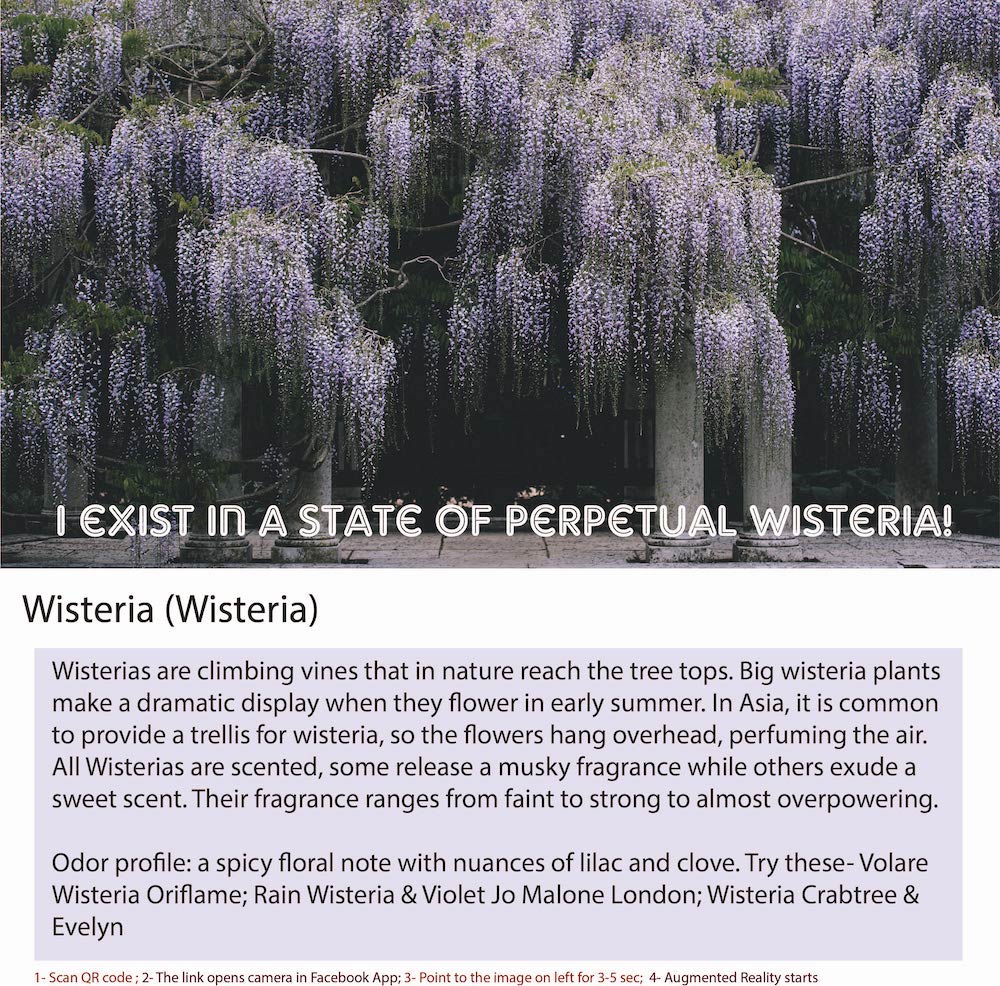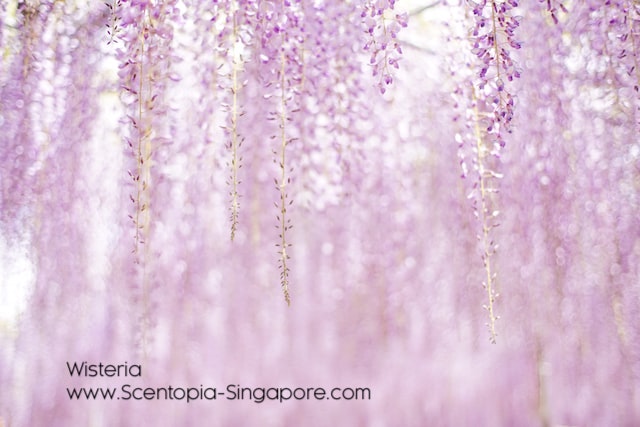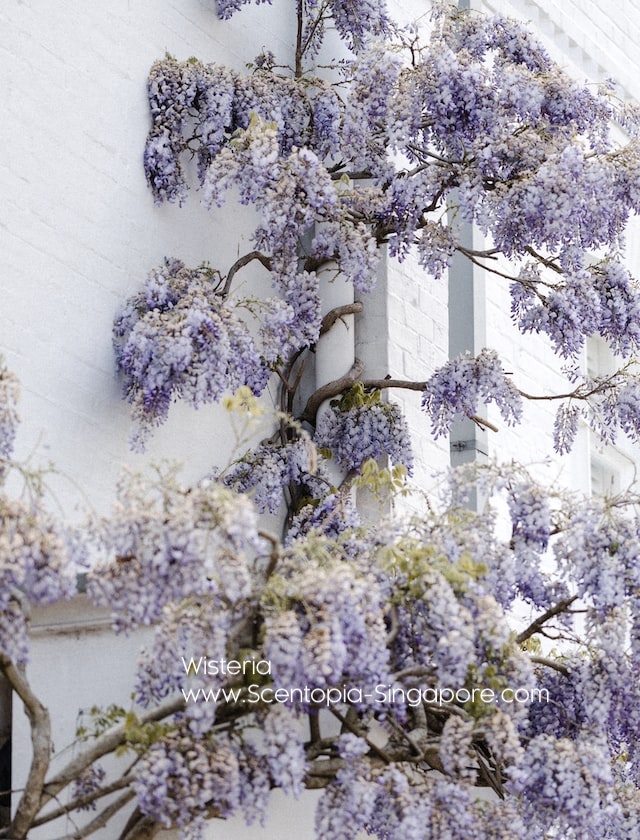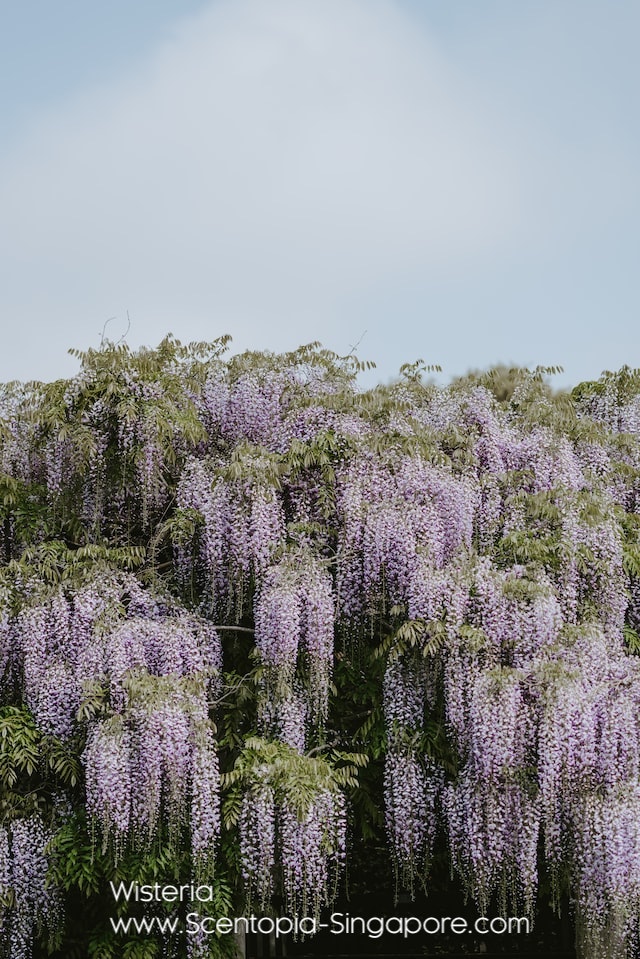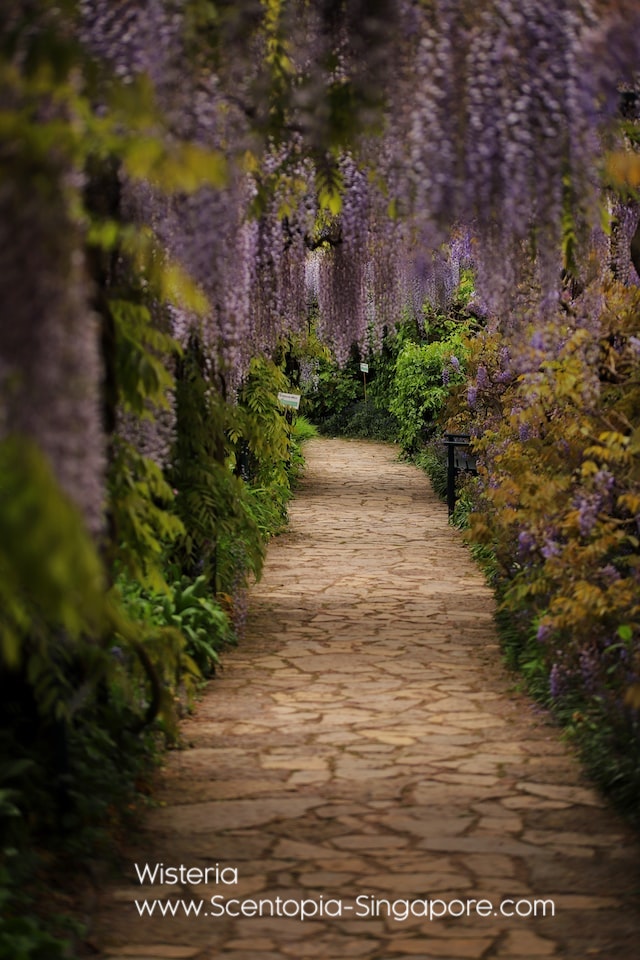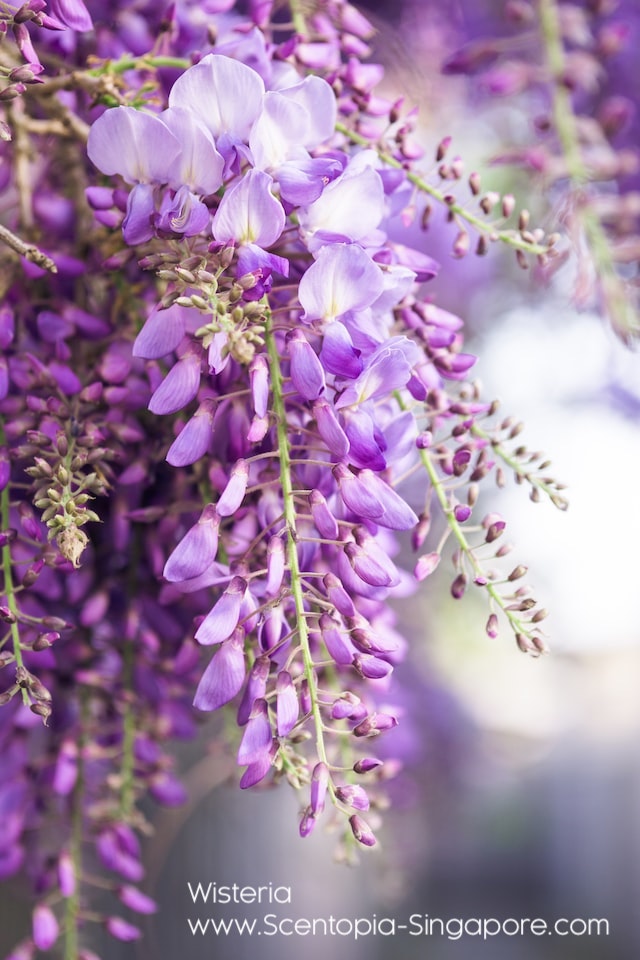Unveiling the Fresh Green Wisteria
Wisteria: The Enchanting Floral Elixir of Perfumes, Beauty, and Fascinating Facts
Introduction: Wisteria, with its enchanting cascading flowers and delightful fragrance, is a captivating flowering plant celebrated for its presence in perfumes, therapeutic oils, and ornamental beauty. Scientifically known as Wisteria, this genus of climbing plants belongs to the pea family, Fabaceae. Native to East Asia and North America, wisteria has been cherished for centuries for its ethereal beauty and alluring fragrance. From inspiring perfumers with its floral allure to its potential therapeutic uses and fascinating facts, wisteria is more than just a decorative plant. This essay delves into the captivating world of wisteria, encompassing its presence in perfumes, therapeutic oils, ornamental beauty, medicinal systems, historical significance, and intriguing fun facts about this extraordinary and cherished flowering plant.
Wisteria in Perfumes and Fragrance: Wisteria's enchanting floral fragrance has inspired perfumers to create scents that capture the essence of this delicate and alluring flower. Wisteria-inspired perfumes often evoke feelings of romance, elegance, and springtime beauty.
Therapeutic Oils and Aromatherapy: While wisteria is not commonly used in therapeutic oils, some practitioners of aromatherapy may incorporate wisteria-inspired scents to promote relaxation and a sense of well-being.
Ornamental Beauty: Wisteria's cascading clusters of flowers and lush green foliage make it a popular choice for ornamental gardens and landscaping. The sight of wisteria in full bloom is a breathtaking spectacle.
Medicinal Uses and Historical Significance: While not commonly used in modern medicine, some traditional medicine systems have utilized certain parts of the wisteria plant for specific health conditions. However, it's essential to note that some parts of wisteria may be toxic and should not be consumed without expert guidance.
Cultural Significance and Symbolism: Wisteria holds cultural significance in various societies. In Japan, wisteria is associated with romance and is a popular motif in art and literature. It symbolizes grace, beauty, and longevity.
Fun and Crazy Facts:
Wisteria, with its enchanting floral allure and potential symbolism of romance and beauty, is a cherished and versatile flowering plant that continues to captivate and inspire with its cascading flowers and alluring fragrance. From its presence in perfumes to its ornamental beauty and potential therapeutic uses, wisteria offers a wealth of enjoyment and potential cultural symbolism. As we admire the cascading blooms and explore its historical significance and intriguing facts, we are reminded of the enduring appeal and natural charm of this extraordinary flowering plant that has enriched our gardens, culture, and lives with its timeless beauty and potential for inspiration.
Introduction: Wisteria, with its enchanting cascading flowers and delightful fragrance, is a captivating flowering plant celebrated for its presence in perfumes, therapeutic oils, and ornamental beauty. Scientifically known as Wisteria, this genus of climbing plants belongs to the pea family, Fabaceae. Native to East Asia and North America, wisteria has been cherished for centuries for its ethereal beauty and alluring fragrance. From inspiring perfumers with its floral allure to its potential therapeutic uses and fascinating facts, wisteria is more than just a decorative plant. This essay delves into the captivating world of wisteria, encompassing its presence in perfumes, therapeutic oils, ornamental beauty, medicinal systems, historical significance, and intriguing fun facts about this extraordinary and cherished flowering plant.
Wisteria in Perfumes and Fragrance: Wisteria's enchanting floral fragrance has inspired perfumers to create scents that capture the essence of this delicate and alluring flower. Wisteria-inspired perfumes often evoke feelings of romance, elegance, and springtime beauty.
Therapeutic Oils and Aromatherapy: While wisteria is not commonly used in therapeutic oils, some practitioners of aromatherapy may incorporate wisteria-inspired scents to promote relaxation and a sense of well-being.
Ornamental Beauty: Wisteria's cascading clusters of flowers and lush green foliage make it a popular choice for ornamental gardens and landscaping. The sight of wisteria in full bloom is a breathtaking spectacle.
Medicinal Uses and Historical Significance: While not commonly used in modern medicine, some traditional medicine systems have utilized certain parts of the wisteria plant for specific health conditions. However, it's essential to note that some parts of wisteria may be toxic and should not be consumed without expert guidance.
Cultural Significance and Symbolism: Wisteria holds cultural significance in various societies. In Japan, wisteria is associated with romance and is a popular motif in art and literature. It symbolizes grace, beauty, and longevity.
Fun and Crazy Facts:
- Long-Lived Beauty: Wisteria vines can live for several decades, with some specimens surviving for over a century.
- Fast Grower: Once established, wisteria is a fast-growing vine, capable of covering vast spaces with its trailing branches.
- Symbol of Immortality: In some cultures, wisteria symbolizes immortality and everlasting love due to its longevity and captivating beauty.
- World Records: Some wisteria plants hold world records for their size and age. The Ashikaga Flower Park in Japan is home to one of the largest wisteria plants in the world.
- Invasive Potential: Some wisteria species have invasive tendencies, particularly in certain regions, where they can outcompete and displace native plants.
Wisteria, with its enchanting floral allure and potential symbolism of romance and beauty, is a cherished and versatile flowering plant that continues to captivate and inspire with its cascading flowers and alluring fragrance. From its presence in perfumes to its ornamental beauty and potential therapeutic uses, wisteria offers a wealth of enjoyment and potential cultural symbolism. As we admire the cascading blooms and explore its historical significance and intriguing facts, we are reminded of the enduring appeal and natural charm of this extraordinary flowering plant that has enriched our gardens, culture, and lives with its timeless beauty and potential for inspiration.
To experience augmented reality, please open the Facebook-app using QR code and point to the image below
Scentopia Singapore: Your Source for Natural Fragrance Ingredients
Wisteria is a genus of flowering plants in the pea family, Fabaceae. There are several species of wisteria, including Wisteria sinensis, which is native to China, and Wisteria floribunda, which is native to Japan. Wisteria is known for its long, pendulous racemes of fragrant, pea-like flowers, which come in shades of blue, purple, pink, or white, depending on the species.
Wisteria is a popular ornamental plant, grown for its showy flowers and its ability to climb and cover walls, arbors, and other structures. The plant is hardy and vigorous, and can grow up to 20 feet or more in a single season. Wisteria is often grown as a woody vine, and it can be trained to grow along a trellis, arbor, or fence.
In addition to its ornamental value, wisteria is also known for its medicinal properties. The roots and seeds of some species of wisteria contain compounds that have been used in traditional Chinese medicine to treat a range of health conditions, including anxiety, insomnia, and asthma.
Wisteria is a beautiful and versatile plant that is well-suited to many different garden styles and landscapes. Whether grown as a focal point or used as a climbing accent, wisteria is a plant that is sure to add beauty and fragrance to any garden.
Wisteria is a popular ornamental plant, grown for its showy flowers and its ability to climb and cover walls, arbors, and other structures. The plant is hardy and vigorous, and can grow up to 20 feet or more in a single season. Wisteria is often grown as a woody vine, and it can be trained to grow along a trellis, arbor, or fence.
In addition to its ornamental value, wisteria is also known for its medicinal properties. The roots and seeds of some species of wisteria contain compounds that have been used in traditional Chinese medicine to treat a range of health conditions, including anxiety, insomnia, and asthma.
Wisteria is a beautiful and versatile plant that is well-suited to many different garden styles and landscapes. Whether grown as a focal point or used as a climbing accent, wisteria is a plant that is sure to add beauty and fragrance to any garden.
Crafting Aromatic Blends with Wisteria Extracts
Wisteria is a genus of flowering plants that has a rich and interesting history. Here are some highlights:
- Native to Asia: Wisteria is native to parts of Asia, including China and Japan. It was first described by botanists in the late 18th century, and was named after Caspar Wistar, a prominent American anatomist.
- Cultivated in the United States: Wisteria was introduced to the United States in the late 1800s and quickly became popular as an ornamental plant. It was grown in gardens and arboreta, and was prized for its showy, fragrant flowers and its ability to climb and cover walls and other structures.
- Symbol of good fortune: In Chinese culture, wisteria is associated with good fortune and is considered a symbol of long life and happiness. It is often planted in gardens and near homes as a talisman to bring good luck.
- Represented in art: Wisteria has been depicted in art and literature for centuries, and is often associated with romantic, nostalgic, or whimsical themes. For example, it is a common subject in the woodblock prints of the Ukiyo-e tradition in Japan, and has been the inspiration for many poems, songs, and paintings throughout history.
- Invasive plant: In some parts of the world, including North America, wisteria has become invasive and is considered a problem in some natural areas. The plant can grow quickly and aggressively, and can outcompete native species for resources like sunlight and water.
Crafting Aromatic Blends with Wisteria Extracts
Wisteria is a popular ornamental plant in Singapore and has a long history of cultivation in the city-state. The plant was first introduced to Singapore in the late 1800s, and has since become a popular choice for gardens and parks.
Wisteria is valued for its showy, fragrant flowers, which come in shades of blue, purple, pink, or white, depending on the species. It is also appreciated for its ability to climb and cover walls, arbors, and other structures, providing an attractive and lush green backdrop for other plants.
In Singapore, wisteria can be seen in a variety of settings, including private gardens, parks, and botanic gardens. It is also commonly used as a decorative element in landscaping, and is often trained to grow along fences, walls, and trellises.
Wisteria is not considered an invasive species in Singapore, and is well-controlled by gardeners and horticulturists. With its beautiful flowers and lush green foliage, wisteria continues to be a popular and much-loved plant in Singapore and around the world.
Wisteria is valued for its showy, fragrant flowers, which come in shades of blue, purple, pink, or white, depending on the species. It is also appreciated for its ability to climb and cover walls, arbors, and other structures, providing an attractive and lush green backdrop for other plants.
In Singapore, wisteria can be seen in a variety of settings, including private gardens, parks, and botanic gardens. It is also commonly used as a decorative element in landscaping, and is often trained to grow along fences, walls, and trellises.
Wisteria is not considered an invasive species in Singapore, and is well-controlled by gardeners and horticulturists. With its beautiful flowers and lush green foliage, wisteria continues to be a popular and much-loved plant in Singapore and around the world.
The Elegance of Wisteria in Perfumery
Wisteria has had a long and enduring presence in art, culture, movies, and literature. Here are a few examples:
- Art: Wisteria has been a popular subject in art for centuries, and is often depicted in paintings, drawings, and woodblock prints. For example, it is a common subject in the woodblock prints of the Ukiyo-e tradition in Japan, where it is depicted in romantic and nostalgic scenes.
- Culture: In Chinese culture, wisteria is associated with good fortune and is considered a symbol of long life and happiness. It is often planted in gardens and near homes as a talisman to bring good luck.
- Movies: Wisteria has also made appearances in movies, often serving as a backdrop or setting for romantic or nostalgic scenes. For example, in the popular Japanese film "Spirited Away," the protagonist Chihiro encounters a magical, sprawling wisteria tree that serves as a backdrop for several key scenes.
- Literature: Wisteria has been the inspiration for many poems, songs, and stories throughout history. For example, the classic English novel "Wuthering Heights" by Emily Bronte features a wisteria vine that grows over the main character's window and symbolizes his longing and connection to his childhood home. Wisteria has a rich symbolic history and holds different meanings in various cultures. Here are some of the most common symbols associated with wisteria:
- Good fortune: In Chinese culture, wisteria is associated with good fortune and is considered a symbol of long life and happiness. It is often planted in gardens and near homes as a talisman to bring good luck.
- Love and romance: Wisteria is often associated with love and romance, due to its fragrant, showy flowers and lush green foliage. In Japanese culture, wisteria is known as "fuji," which means "lady of the wind." This association with grace and beauty has made wisteria a popular symbol of love and affection.
- Nostalgia: With its sweet fragrance and elegant beauty, wisteria often evokes feelings of nostalgia and longing. In literature and art, wisteria is often used to represent the beauty and transience of life and the memories that linger long after the flowers have faded.
- Strength and endurance: Despite its delicate appearance, wisteria is a hardy and long-lived plant. In this sense, it is often seen as a symbol of strength and endurance, representing the power of nature to endure and overcome even the most challenging of conditions.
Our Commitment to Quality Botanical Extracts
Wisteria has a distinct and recognizable scent profile that is sweet and floral. The scent is strongest when the flowers are in full bloom and is most noticeable on warm, sunny days. The fragrance of wisteria is delicate and subtle, but also powerful, and can carry for some distance on the wind.
The fragrance of wisteria is due to the presence of volatile organic compounds (VOCs) in its flowers. These VOCs include compounds such as benzyl acetate, which give wisteria its sweet, floral scent, and other compounds such as benzyl alcohol, which contribute to its fresh, light aroma.
Overall, wisteria is known for its sweet, delicate fragrance, which is often described as being similar to that of jasmine or lilac. Whether enjoyed in the garden or in a bouquet, the scent of wisteria is a testament to its beauty and timeless appeal.
Wisteria's scent is due to the presence of various volatile organic compounds (VOCs) in its flowers. Here are some of the chemicals commonly found in wisteria that contribute to its scent:
The fragrance of wisteria is due to the presence of volatile organic compounds (VOCs) in its flowers. These VOCs include compounds such as benzyl acetate, which give wisteria its sweet, floral scent, and other compounds such as benzyl alcohol, which contribute to its fresh, light aroma.
Overall, wisteria is known for its sweet, delicate fragrance, which is often described as being similar to that of jasmine or lilac. Whether enjoyed in the garden or in a bouquet, the scent of wisteria is a testament to its beauty and timeless appeal.
Wisteria's scent is due to the presence of various volatile organic compounds (VOCs) in its flowers. Here are some of the chemicals commonly found in wisteria that contribute to its scent:
- Benzyl acetate: This chemical gives wisteria its sweet, floral aroma and is commonly used in perfumes and fragrances.
- Benzyl alcohol: This chemical contributes to the fresh, light aroma of wisteria and is also used in perfumes and fragrances.
- Linalool: This chemical is found in many flowers and plants and gives them a fresh, floral aroma.
- Linalyl acetate: This chemical is commonly found in many flowers and is responsible for the sweet, floral scent of wisteria.
- Caryophyllene: This chemical is found in many herbs and spices and gives wisteria a spicy, woody aroma.
Exploring the Scentopia Collection with Wisteria Notes
Here is a list of perfumes that feature the scent of wisteria:
- Le Jardin de Monsieur Li by Hermès
- Wisteria Moon by Jo Malone London
- Wisteria by Maria Candida Gentile
- Wisteria Alley by Demeter Fragrance Library
- Wisteria Blue by Yardley London
- Wisteria by Pacifica
- Wisteria Garden by Bath & Body Works
- Wisteria by L'Occitane
- Wisteria by Tokyo Milk
- Wisteria by Penhaligon's
Join Scentopia, Sentosa's latest tourist attraction wonderful orchid scent crafting, fragrance tour, bridal shower or corporate team building which includes perfume making onsite and offsite, beach activities and more. We also serve primary school learning journey, secondary students and pupil on industrial excursions. Know more about our orchids perfume bar or therapeutic orchid scents and other wellness aromas. Conatct Perfume workshop or book a scent crafting session here.

